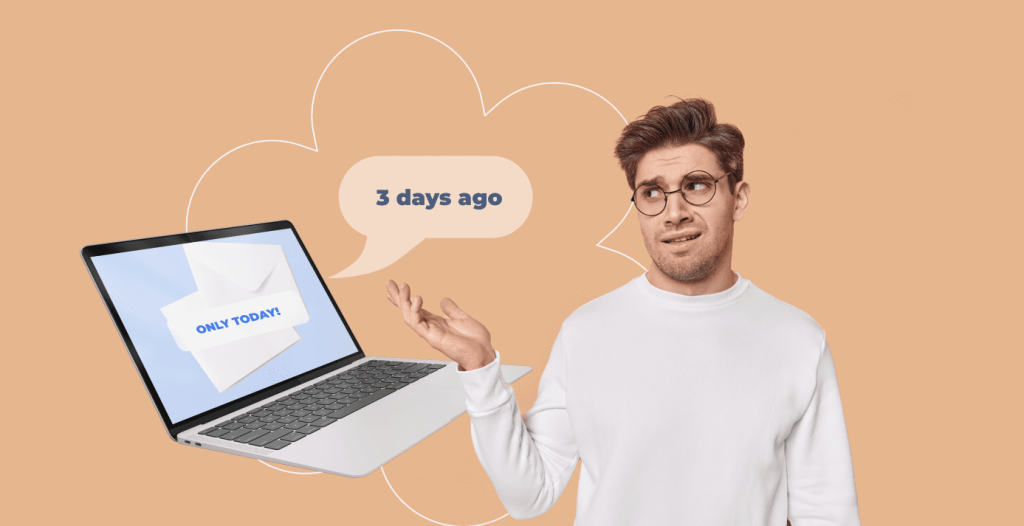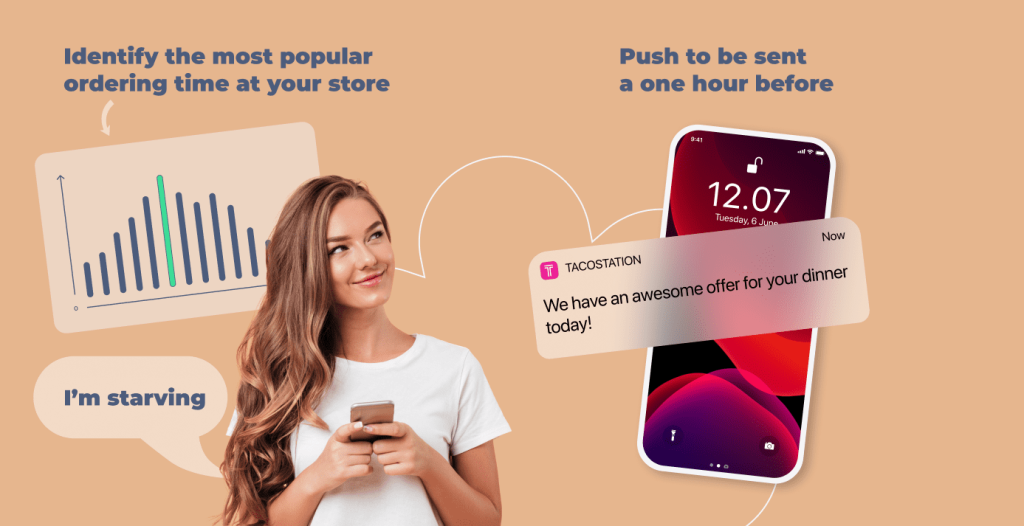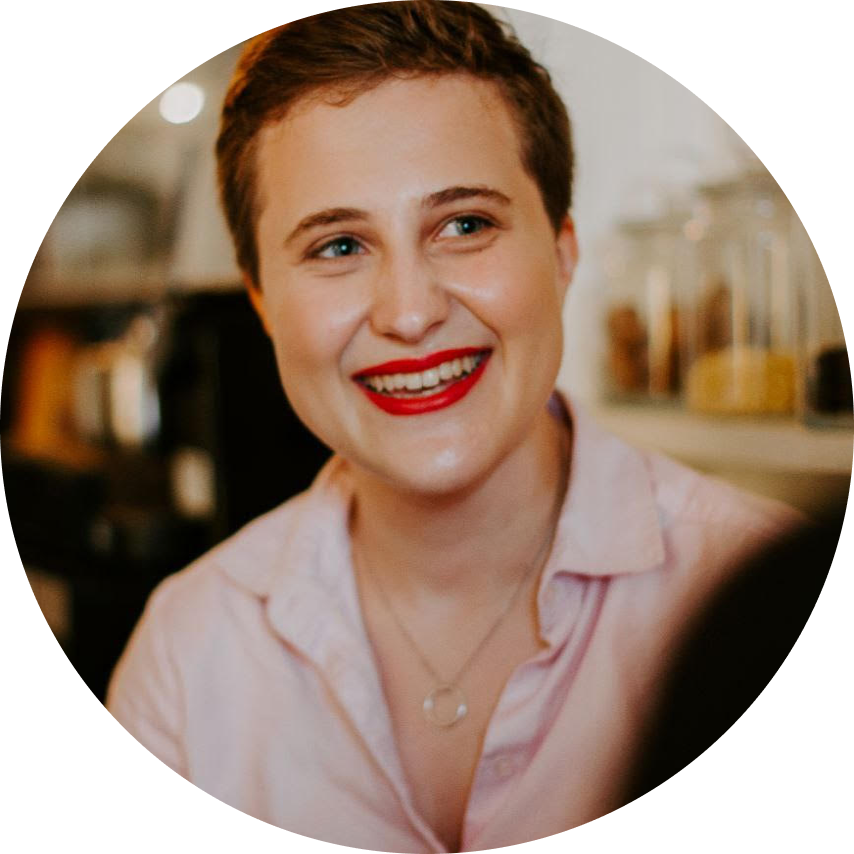
78% of all email campaigns aren’t opened in the very first hour after they’re sent. How to send the right offer at the right time
In my previous article, we took a look at how customer purchase history can become your best revenue-generating mechanism. If you use it in a smart way, more customers will start using your offers, and a boost in the repeat orders is guaranteed.
However, even though the content of the offer plays a huge role in its success, another important thing to consider is when this offer is delivered, or rather – when it is seen by the customer.
If we’re speaking about a lifetime of a usual email, 78% of all email campaigns aren’t opened in the very first hour after they’re sent. And as each hour passes, the likelihood of your email getting more opens decreases. Offers are not limitless, so it leaves you with a very small percentage of the audience that gets the offer at the right time.

Other channels (like in-app push messages) can perform better – but it’s still important to make the most of the time you’re sending the offer. So here’s a step-by-step guide to use it to your advantage.
1) Identify the most popular ordering time at your stores
Based on the campaign, the “ideal” time of sending an offer can be different, but for common types of campaigns, it’s basically when people order the most. This is the time when the interest is at its peak, so the chances that the offer will hit the customer’s inbox at the right time to spark this interest are significantly higher as well.
Of course, if it’s about an off-peak hours campaign or breakfast special offer, the target time will be different. It might also depend on your type of business. In any case, to choose a perfect target time, analyze when the thing you offer sells best.
2) Send a message one hour before
…and make sure the customer sees it if not exactly at that time, then definitely not 3 days after!
Let’s say that you have a special dinner offer, and the most popular order time in the evening is 8 pm. In this case, the push message should be sent around 7 pm with one goal – to “catch” the customer when they’re hungry. Communication in this case becomes customer-led: the customer is most likely to be hungry and looking to order some food (based on your popular ordering times) > they receive a special offer > they choose your restaurant to order from to make use of this offer.
The channel for such an offer should be able to reach the customer instantly. With modern Gmail-like inbox filters, email becomes completely unusable in this case. You can still try – but remember that most likely only 22% of the audience will see it.
In this case, we’d recommend push notifications from the restaurant’s mobile app. This channel is quick, and if you have a decent mobile app strategy, it’s also the most reliable channel. If you don’t have an app, SMS or messengers could also work – but keep in mind that it will more likely be perceived as spam (as customers are used to receiving all kinds of ads on these channels) and swiped from the screen as soon as it arrives.

3) Use “uneven” times
Now, while you’re planning your campaign, your competitors – and all other businesses you can imagine – are doing the same thing. So if you put your offer at an even time, like 7 pm or 7:30 pm, the chances are that the customer will receive it together with everything else they get from other companies. Instead, try selecting times such as 7:13, 7:37, or 7:08. Use every possibility to get the customer’s attention.
4) Don’t forget the reminders!
While the time of the first point of communication is important, don’t shy away from reminding the customer about the offer (if the nature of your campaign allows it). Maybe they were on a call when they received it, or just busy commuting – the reminder can still convert their view to order.
In our experience, 30% and sometimes even 40% of customers who received the offer react to the last reminder.

5) Make sure the CTA is clear and the offer can easily be redeemed
This concerns the UX more than the offer time, but a lot of customers, even interested in the offer, might drop off as soon as they experience the first “bump” in the ordering workflow. For example, if they need to copy a promocode from one source and paste it elsewhere.
The message about the order should lead directly to ordering with the offer applied. All other options risk conversion drop, even if the content and the timing were on point.
Here’s how to use time to your benefit when running campaigns. I suggest you try it for your next special offer – and if you need help with digitizing the user base and sending the offer across, LoyaltyPlant is here to help you!











